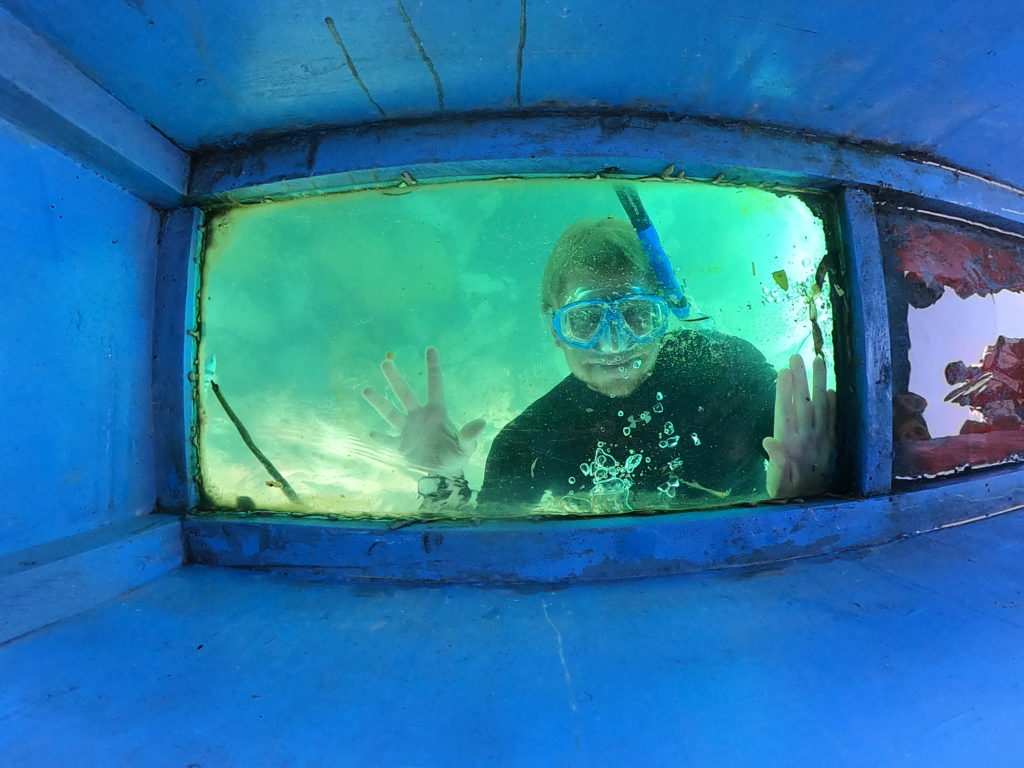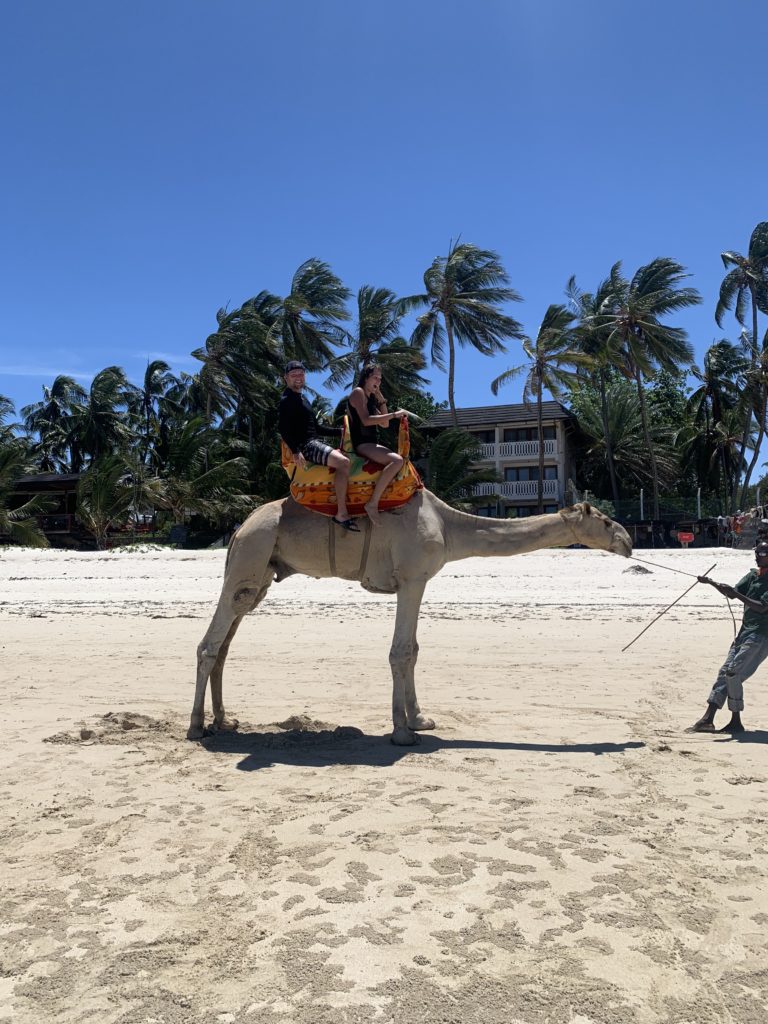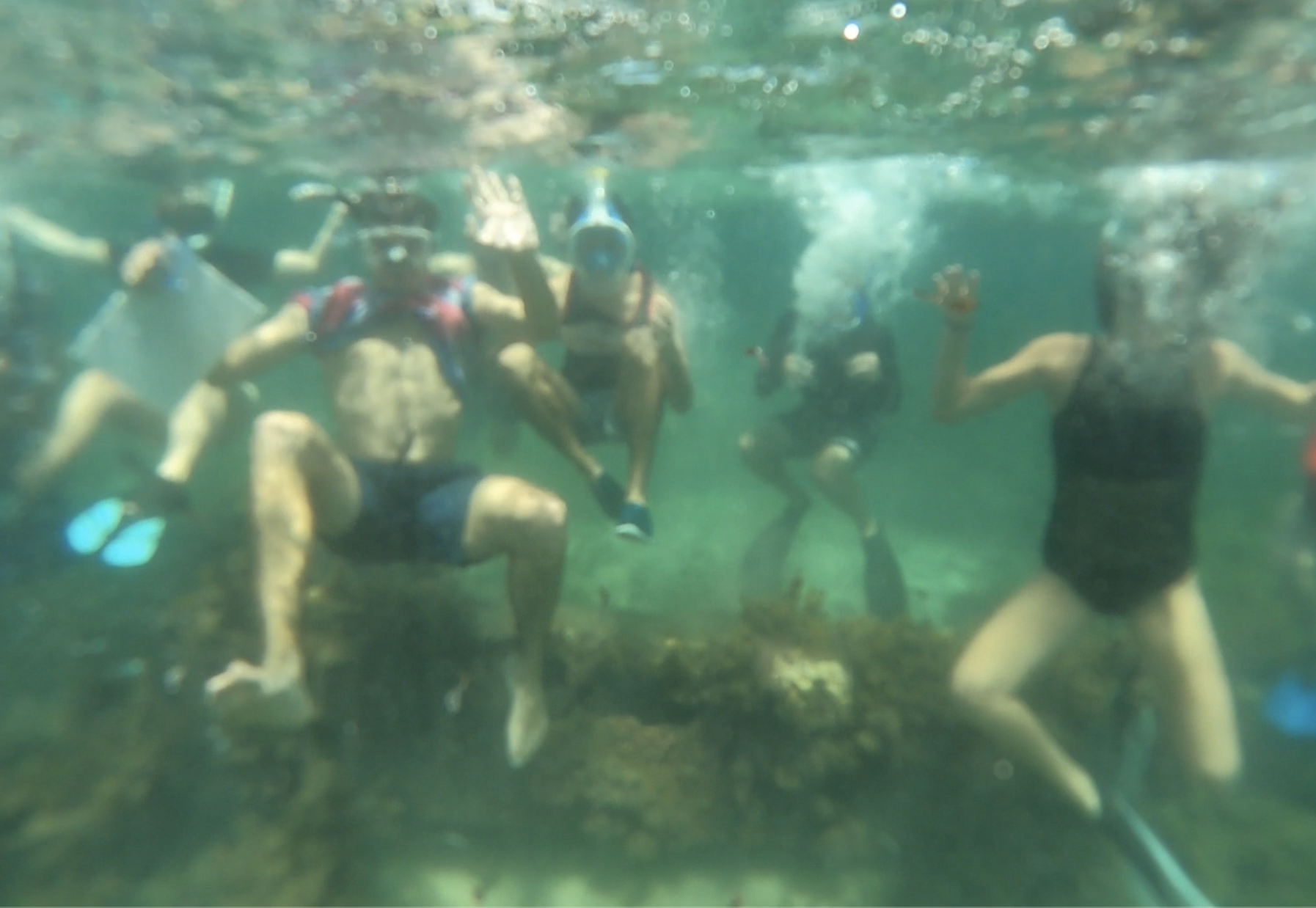
As soon as we were able, our professors got us back to learning ecological research methods, only this time it was in water. With the help of local guides, we were able to visit a variety of marine parks in and around the Kilifi area. Local seagrass expert Dr. Charles headed up our field data collection while Dr. Oliver and our activities coordinator Oscar were along to assist.
The first place we explored was Jumihija Beach just South of Kilifi. We spent the day sampling the seagrass beds in the reef protected lagoon. 3, 100 meter transects were laid in roughly 1 foot of water. We then recorded shoot density, variety, as well as proximate invertebrates. The highlight of this excursion was getting to eat a sea urchin halfway through, that is, until I realized the only edible part of a sea urchin was its genitals. Still, the salt water helped drown out the taste of gonads and it wasn’t bad.
The second place we went was a place called Mombasa Marina Park. This place was by far my favorite. Mombasa is located roughly 1.5 hours South of Kilifi, and is a bustling coastline city of over 1.2 million people with a rich history. Upon entering the city, we were driven to a beach where we boarded a clear bottom boat. The boat took us about a mile out to a seemingly random spot, that is, until I peaked beneath the waves…
The goal of this excursion was to understand how to sample fish populations under water. This was done by placing 3, 50 meter transects along the seafloor using a giant tape measurer. We then donned our snorkel gear and began to collect our data.

Data was collected by slowly floating along the transect and recording all fish species we saw along the way. We also recorded estimated fish length as well as how many there were. With the amount of fish present, this would have been difficult for an experienced researcher. As someone who had never seen these fish species in my life, it was interesting. My data sheet was riddled with the numerous species I was able to identify such as the “yellow blacks” and the “not clown fish”. Luckily the point of this exercise was the methodology involved and not the accuracy of our results.
Overall, the day was a huge success! Despite shortcomings, we managed to collect huge amounts of data to be presented on later. I still cannot believe I get to call this school. As if the day wasn’t already cool enough, a camel was awaiting us on shore to take us back to our cars.



